
by F. Alton Everest
Every home listening room is beset with sound reflected from walls, floor, and ceiling. These reflections may enhance or degrade the quality of the music, depending on subjective opinions or on such objective factors as the loudspeakers' and the listener's positions, the size of the room, and the reflective properties of the room surfaces. A basic understanding of the effect of reflections on the listener's perception of music is important to the audiophile.
The first sound to arrive at the listener's ears is the sound directly from the loudspeaker. This localizes the source of the sound. Reflected sound arriving immediately after the direct is masked as far as localization is concerned, but it does affect the quality of the sound.
The sound directly from the loudspeaker arrives first at the listener's ear, because it travels the shortest path. Reflections arrive later because of the time required to travel to the side wall (for example) and back to the listener's ear. The reflection is weaker than the direct sound because of the greater distance travelled and because of losses at the reflecting surface. The three variables descriptive of a reflection are its level, delay, and angle of incidence. Level is expressed in dB below the amplitude of the direct sound, delay in milliseconds after the direct sound's arrival, and angle of incidence in degrees horizontally and vertically relative to the direct sound.
A normal stereo arrangement in the average home listening room usually yields strong early reflections, predominantly in the range from 1 to 20 mS. Multiple reflections and reflections from the rear of the room are delayed much more than 20 mS, but they often are of less immediate significance because their level is low due to the greater distance travelled and to multiple reflection losses. Single-bounce reflections from front and side walls, ceiling, and floor are dominant because their levels are highest. The levels of these early reflections in a typical listening room are rarely more than 10 dB below the direct, with delays from 1 to 20 mS. The questions then boils down to, "What effect on listening will reflections have if their delay is 1 to 20 mS and their levels are within 10 dB of the direct signal?" Some very interesting psycho-acoustical research can help answer this question.
Reflection Research
Many psychoacoustic experiments have been conducted in the past, involving perception of a direct signal in the presence of a simulated reflection. Curiously, most of these have been done with loudspeakers and observer arranged very much like the standard stereo setup. Many of the earlier experiments applied more to listening conditions in the concert hall. It remained for Sean Olive and Floyd Toole at the National Research Council of Canada to verify some of the early experiments and to perform many others applying directly to the home listening room [1]. One intuitively senses that the quality of the direct sound in the listening room is affected by reflections from the surfaces of the room, but actual measurements are needed. To measure the effect, the observer is seated in an anechoic room facing a loudspeaker that radiates the direct, or primary, signal (Fig. 1). A second loudspeaker, the simulated reflection, 30° to 60° off to the side, radiates the same signal with adjustable level and delay. With the direct signal at a comfortable level, the level of the side loudspeaker, representing a lateral reflection, is varied both in level and delay to investigate the audible effects of the "reflection." The monophonic results of such tests are directly applicable to stereophonic listening.
Some fundamental information is shown in Fig. 2. At a certain delay setting, say, 20 mS, the level of the reflection is slowly increased from a very low level until something different is first heard. This is termed the threshold of audibility of the simulated reflection. If the same delay is maintained, a sense of spaciousness is perceived as the reflection level is increased slowly above threshold. This sense of spaciousness is very real, even making the anechoic chamber sound more like a normal room. Increasing the level of the reflection continues to increase the spatial effect. About 10 dB above the threshold of audibility of the reflection, a second threshold is found.
Now the direct signal is perceived in a still different way: As a broadening of the image and, at still higher reflection levels above the second threshold, as a shifting of the image (away from the direct source). Spaciousness generally persists in addition to these new effects. As the strength of the reflection is increased still more, a third threshold is approached, delineated by curve C in Fig. 2. The direct sound is now perceived along with a discrete echo.
Reviewing the meaning of Fig. 2, we can see that reflections having level and delay values which place them in the shaded area below the solid curve are not heard at all; they have no effect on the quality of the direct sound. Reflections having level and delay values which place them in the shaded area above curve C of Fig. 2 are detrimental to the primary sound because discrete echoes are introduced. The reflections whose level and delay place them in the unshaded central area are, potentially at least, useful. A single, lateral reflection from a side wall can produce varying amounts of spaciousness and image broadening if the absorption of the wall surface at the point of impact is changed. This gives hope to the serious listener that something may be done about optimizing his own listening situation.
Olive and Toole stated that the observers in these experiments felt they were "responding to directional and spatial effects, rather than to changes in timbre or sound coloration." Therefore, gathering these spatial and directional effects under the term "coloration" may be questionable. The word color, as applied to sound, carries a meaning of frequency response, or timbre, in an analogy to light. For better or for worse, the title of this article lumps spatial and directional effects together with timbral effects.
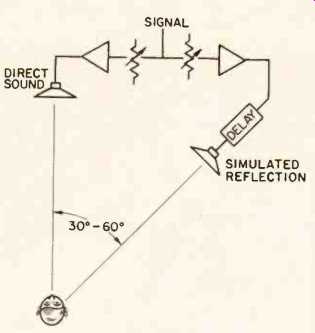
Fig. 1--Setup for testing effect of simulated reflections on direct signal.
Reflection Direction
The reflections on which Fig. 2 is based all came from roughly the same direction.
Do reflections from the ceiling and the side walls have the same effect? In other words, how general is the data of Fig. 2? It has been demonstrated by Olive and Took (and others) that the direction from which the reflection arrives has practically no influence on its effectiveness-with one important exception. When the reflection comes from the same direction as the direct signal, detection of the reflection is somewhat suppressed. The direct signal tends to mask, by about 5 to 10 dB, reflection effects from the same direction. This would seem to mean that delayed reflection effects recorded with music would be somewhat discriminated against as they are reproduced in the listening room.
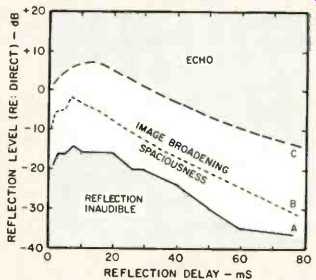
Fig. 2--Absolute thresholds for a single lateral reflection of a speech
signal under anechoic conditions.
Spaciousness Recorded with Music
Spaciousness has been eagerly sought after in the concert hall. The effect has been variously described as ambience, envelopment, apparent source width, subjective diffusion, spatial impression, etc. It is the goal of the acoustical consultant to guide the architect toward a structure that will produce lateral reflections to give the music these desired attributes for those in the audience. The microphones recording a music event, however, are not placed at the listener's position in the audience; hence they will record a different spaciousness, one better described as the ambience of the room. The reflection effects picked up by the microphones will differ from those perceived by the audience. It is even possible that some artificial reverberation will be added. Recorded ambience effects will be played back in the home listening environment along with the music. This results in two possible sources of spaciousness in the home listening room: That which is on the CD or other medium, recorded along with the music, and that which is produced in the listening environment. The spaciousness in the original recording tends to be masked by the direct signal, which comes to the listener from the same direction, the loudspeaker.
Spaciousness in Listening Rooms
What audiophile isn't interested in the sharpness or broadening of the perceived image or in optimizing to taste the ambience or spaciousness of the listening environment? Adjustment of these factors would seem to be possible through controlling level and delay of early reflections, shown in Fig. 3. Actually, the delay part is determined by the geometry of the listening room and the arrangement of loudspeakers. The absolute threshold of audibility of a single reflection in Fig. 2 is essentially independent of delay below 20 mS. This leaves the adjustment of the level of the reflection as the variable for achieving the desired results. (More on this later.)
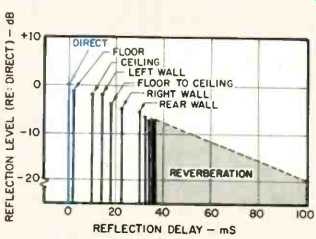
Fig. 3--Early reflections in a typical listening room.
Classification of Signals
Olive and Toole gathered data from afar to add to their own, which compared the threshold of audibility of different types of signals W. J. They compared the effects of Handel's Concerto Grosso, pizzicato violin, music of Mozart, speech, castanets, clicks, and pink noise. This study suggested the desirability of classifying signals as continuous or noncontinuous. Pink noise may he taken as the epitome of the continuous type; a series of clicks (pulses) at a rate of two per second is the noncontinuous extreme, while speech and music are in between. The role of pink noise as a reasonable, easily measurable signal as a surrogate for music is supported by studies of reelection threshold (Fig. 4).
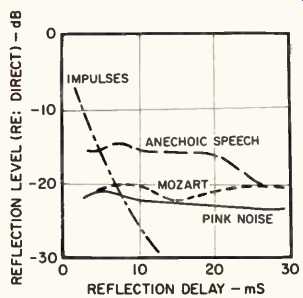
Fig. 4--Audibility thresholds for reflected sounds of different types.
A modest amount of reverberation (either on the recording or generated in the room) tends to make a noncontinuous signal act like a continuous one. The very existence of a reverberant field in the typical listening room is questioned by some.
There is no denying, however, the existence of many late reflections, which tend to become merged (as in Fig. 3). The thresholds of audibility of a single lateral reflection for signals varying in "continuousness" are compared in Fig. 4.
Note that the slope of the threshold curve increases as the discontinuity of the signal becomes more apparent.
Spectrum and Reflection Audibility
The early studies were conducted with identical signals for both the direct sound and the simulated reflection, but this is an unreal situation. The spectrum of the direct sound in the listening room is usually as flat as the state of the art will permit. The off-axis sound of the loudspeakers striking the side walls (for example) is deficient in highs. The sound reflected off the side walls loses even more highs because of the absorption characteristics of the surface. (See Table 1.) This means that the reelection coming back to the listener from the side wall has a spectrum differing greatly from that of the direct sound. Tests revealed that extreme low-pass roll-off had little effect on the absolute threshold of audibility of reflections. It should be noted, however, that although the detection of the reelection was not altered, the audible effects above the threshold were strongly affected by the spectral changes, in terms of both spatial effects and timbre.
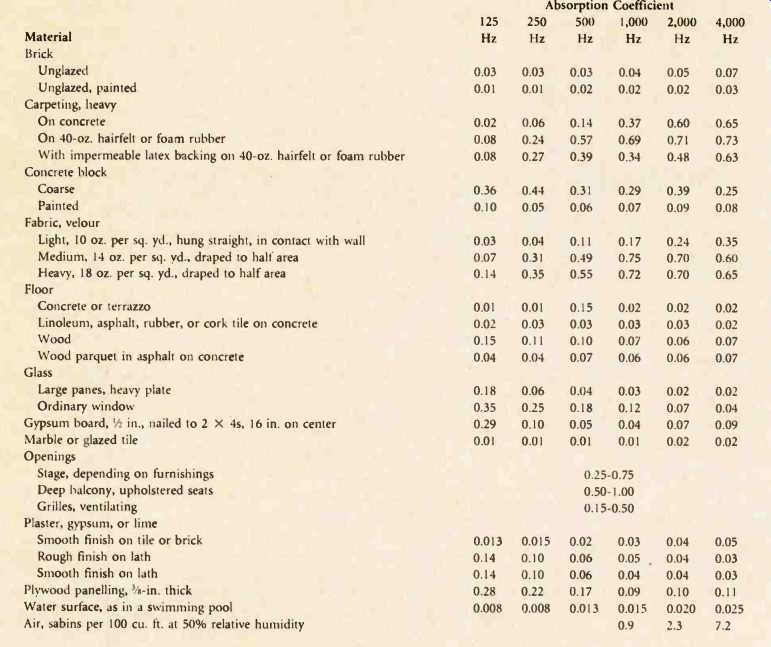
Table 1--Absorption coefficients of general building materials and furnishings.
(Reprinted with permission from Handbook for Sound Engineers--The New Audio
Cyclopedia, Second Edition, Glen Ballou, editor; Howard W. Sams, publisher;
1991.)
Adjustment of Spaciousness
Can this new knowledge of the effect of reflections on the quality of the signal be put to use in the home listening room? In control rooms, sharp image localization and spatial discrimination are generally desirable. In the concert hall, spatial enhancement is the goal. The most favorable conditions in the home listening room are far less specific and subject to personal preference. What follows is based on the assumption that the creative and discriminating listener will welcome suggestions for controlling the degree of spaciousness to fit a specific listening space and a favorite type of music.
The first step is to examine the details of the early reflections in the listening room, much as in Fig. 3. The delay of each specific early reflection may be found from the difference in path length between the direct and reflected sounds, based on the speed of sound, 1,130 feet per second. For example, the direct distance from the left speaker to the listener's ears is measured. The length of the path of the floor bounce from that speaker is also measured. The delay of this first reflection to arrive at the listener's ears is then calculated. To obtain the reflection delay, subtract the direct path from the reflected path and then divide this result by 1,130. If, for example, the reflected path is 7.8 feet and the direct path is 7.5 feet, the floor bounce is delayed by only about 0.0003 S, or 0.3 mS. The delay of all other reflections will be greater than this.
The level of a given reflection at the listening position may be estimated by measuring the lengths of the direct and reflected paths. To calculate the reflection level at the listening position, divide the direct distance by the reflection distance, ascertain the log of this result, and then multiply by 20. As an example, say the distance of the loudspeaker to the listener's ear is 12.0 feet and the distance from the loudspeaker to the side wall and then to the listener's ear is 14.1 feet. The reflection level is therefore 20 log (12.0 divided by 14.1), which equals 20 "log (0.851) or -1.4 dB with respect to the direct level. This assumes inverse-square propagation and 100% reflection at the wall surface.
With a helper, a measuring tape, and patience, a reflection graph like Fig. 3 can be built up for one of the loudspeakers of the stereo pair and one side wall. The graph itself is not as important as the experience of focusing attention on the early reflections.
It is suggested that reflections from the floor, the ceiling, and the wall behind the loudspeakers be reduced so that the left and right wall reflections will be left in control of the situation. The effects of the floor reflection can be reduced somewhat by a thick rug. The placement of this rug is determined by having the helper move a mirror on the floor so that the person in the listening position can see the tweeter of the left loudspeaker first, and then the right one, in the mirror. The rug should then cover both of these spots.
This same procedure can locate the two spots on the ceiling responsible for the ceiling reflections to the listener's ear. A defined area that includes these two spots can then be covered with acoustic tile, glass fiber, or acoustic foam.
Reflections from the wall behind the loudspeakers are more difficult to pinpoint, as the sound source is primarily diffraction from the edges of the loudspeaker cabinets. The critical area for these reflections can be covered by a sheet of absorbent material (carpeting or heavy drapery). This material should extend from a foot or so to the left of the left loudspeaker to a foot or so to the right of the right loudspeaker, and from the floor to a foot or so above the top of the loudspeakers.
This leaves the energy of the left and right wall reflections to be the first returned to the listener after the direct sound. Cleaning up the floor, ceiling, and front wall reflections has probably already improved the sound quality. Now, the amount of spaciousness to be generated in the listening environment by the side wall reflections can be adjusted. First, the point on the wall responsible for the reflection can be easily found by the mirror method. If no absorbent material covers this spot on the left and right hard walls, the reflection efficiency is close to 100% and the reflection level is at its maximum. If critical listening reveals that this gives too much spaciousness, the reflection level at the listener's position can be reduced by covering the reflecting areas with absorbents having different reflection efficiencies. Selecting material for this is left to the ingenuity of the listener.
You will probably find that the optimum wall treatment may be different for different styles of recordings, which makes life interesting.
It is imperative that a clear distinction always be made between the spaciousness and image broadening of the concert hall fixed on the recording and that produced in the environment of the listening room.
Attention must also not be diverted from the overall reverberant character of the listening room. If too much absorbent material is added, the room may become too dead for good music listening or even for comfortable conversation. As Olive and Toole [1] say, "... spaciousness and timbral enhancement of the kind that are expected of a concert hall may be unwelcome if they are added by an environment for stereo listening" This is a point to be settled experimentally by the creative listener, who is urged first to study carefully [1] and [2] before embarking on a program of room adjustments.
References
1. Olive, Sean and Floyd E. Toole, "The Detection of Reflections in Typical Rooms," Journal of the Audio Engineering Society (July/Aug. 1989, Vol. 37, pp. 539-553).
2. Toole, Floyd E., "Loudspeakers and Rooms for Stereophonic Sound Reproduction," Proceedings of the Audio Engineering Society 8th International Conference (Washington, D.C., 1990, pp. 7191).
3. Meyer, E. and G. R. Schodder, "Über den Einfluss von Schallrückwürfen auf Richtungslokalisation and Lautstarke bei Sprache" ["On the Influence of Reflected Sound on Directional Localization and Loudness of Speech"], Nachr. Akad. Wiss. Gottingen, Math. Phys. Klasse IIa (1952, Vol. 6, pp. 31-42; cited by Toole in [2]).
(Adapted from Audio magazine, Mar. 1993)
Also see:
The Best Place for your Speakers? Your Computer Knows! (Aug. 1998)
Bass vs. Space: Room Acoustics and Good Sound (Audio magazine, July/Aug. 1999)
Flying Blind--The case against long-term listening (March 1997)